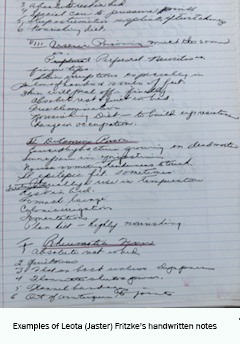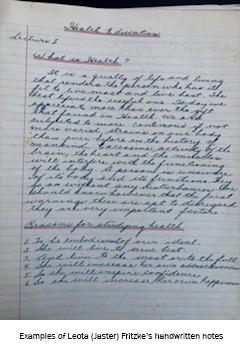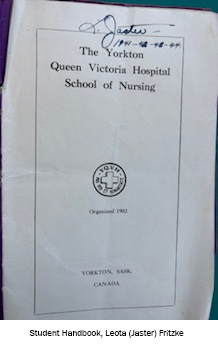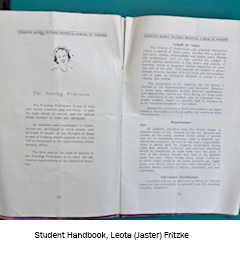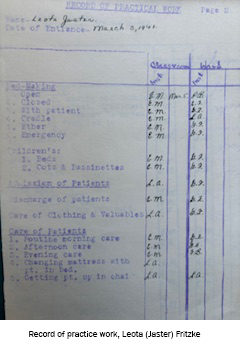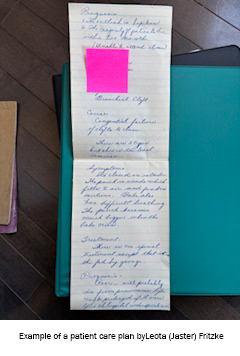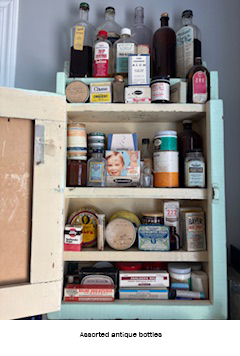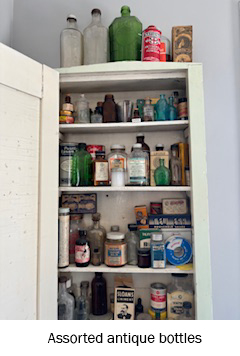Legacy of Care: Five Generations of Nurses in One Family's Story
For Dr. Janine Brown, RN, PhD, CCNE, and Associate Dean at the University of Regina’s Faculty of Nursing, nursing is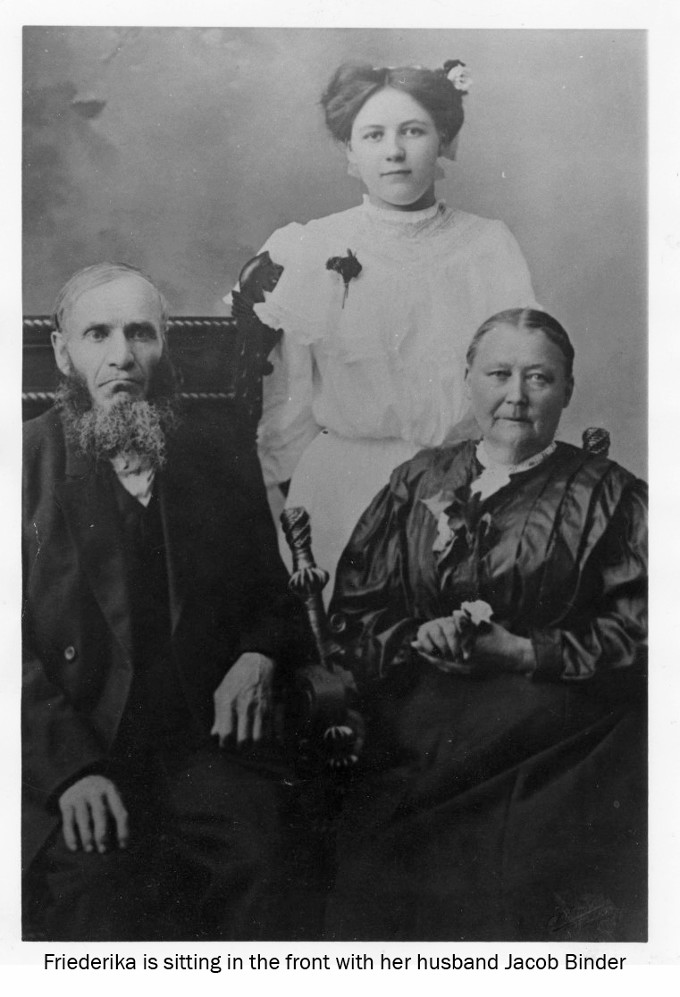 more than a profession — it’s a legacy. Her family’s journey in caregiving spans over 180 years, beginning with her great-great-great-grandmother Friedrika Binder, who was born in 1843.
more than a profession — it’s a legacy. Her family’s journey in caregiving spans over 180 years, beginning with her great-great-great-grandmother Friedrika Binder, who was born in 1843.
Known as “The Bone Setter” for the many broken bones she set for her nine rambunctious children, Friedrika developed a reputation as a solid nursing practitioner at a time when doctors were scarce. People would come from miles away to be treated by Friedrika’s nursing skills in setting broken bones, and tending family and neighbors as a midwife.
Born in Poland, Friedrika immigrated to Canada with her husband Jacob in 1894. They settled in Winnipeg, before moving as pioneers to North Dakota and Minnesota.
“My mom grew up hearing all the stories about her grandmother,” said Corinne Arnold, Janine’s mother. “And from a very early age she thought her grandmother was a gifted woman with an aptitude for nursing skills, and with a personality that reached out to help others.”
Word of Friedrika’s reputation reached a noted doctor from Bismark, North Dakota. When he questioned Friedrika about her credentials, Jacob showed the doctor a document that was written in Russian, and the inquiring doctor subsequently accepted the “documentation”. That strength of conviction and character carried through to Friedrika’s great grand-daughter (Janine’s grandmother and Corinne’s mother) Leota Fritzke.
Leota Graduates in 1944
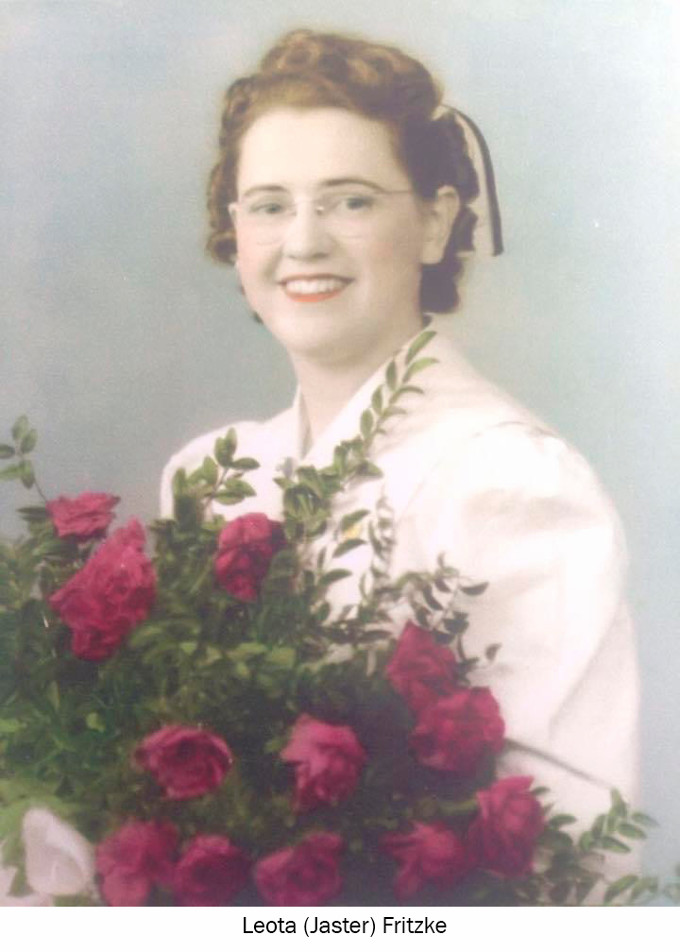
Leota was determined to become a nurse. Not an easy feat in the early 1940s, a time when society expected women to marry early and raise families. Growing up in a rural farming community near Maple Creek, Leota attended a one room school for eight grades, completed grade nine to eleven by correspondence, and took her Grade 12 at Luther College in Regina. She was accepted into the three-year nursing program at Yorkton Queen Victoria Hospital, graduating in 1944.
Vaccines and a medical examination were compulsory for acceptance into the program, and Leota complied, receiving her diphtheria, smallpox and scarlet fever vaccinations. This hit close to home for Leota, whose older brother died at home of scarlet fever meningitis when she was nine years old.
The newly-minted nurse and her close friend and fellow nursing graduate Wilma Fritzke boarded a train to Winnipeg, where they roomed together and started working at the Winnipeg General Hospital, before moving on to private nursing care.
Leota moved back to Maple Creek, and she was working on December 6, 1945, when fire ravaged the Maple Creek Hospital. Seven patients perished that night, and 14 survivors were moved to the nearby military hospital.
Family life soon came for the young nurse when she married the brother of her good friend Wilma and she became Leota Fritzke. Leota’s nursing skills were soon tested when she unexpectedly but calmly delivered her own baby enroute to the hospital.
Loeta’s daughter Corinne was immersed in the nursing culture at a very young age, remembering how her mother brought home empty nursing charts. Using nothing but her imagination and a pencil, Corinne would dream up patients, filling in their “charts” and making a care list.
Corinne Continues the Legacy
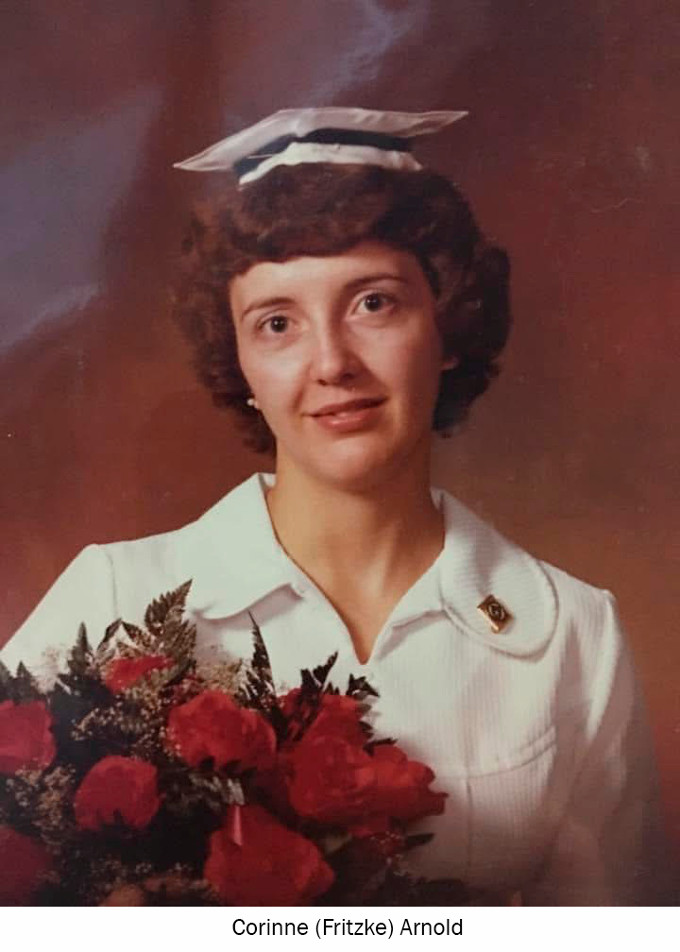
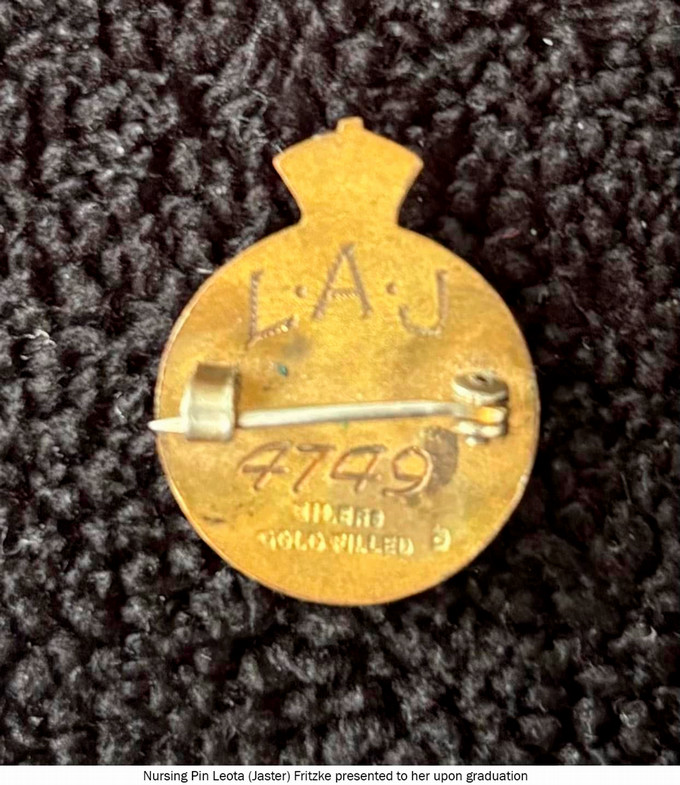
By 1979 she followed her mother’s path into nursing and graduated at a time when medical technology was transforming the nursing profession.
“I remember intravenous solutions were held in glass bottles, and the flow rate was calibrated by counting how many drops fell into the drip chamber.” she explained. “We never had IV pumps when we first started. There was no HIV, there was no Hepatitis C, no toxic shock, no drug resistance to staph aureus and other bacteria.”
Corinne spent most of her career in public health. During home visits assessing newborns, Corinne painted a picture of nursing which addressed what today would be termed mental health needs. Finding a new mother in tears, and seeing that the infant was thriving, those visits were not about baby care or immunizations, but focused on supporting the new mother.
“If you said to them, how are you today, and they broke down and were in ill health or struggling with mental health or their child, you started where they were,” said Corinne. “I think that was a valuable lesson for me to learn, that my goal wasn’t to get everything on the to-do list completed.”
That human interaction was instilled by her mother Leota, who taught her that compassion was at the heart of nursing. “It began with being kind, asking how are you and really listening for their answer, and if they say I’m scared, that’s where you start.”
She added that nurses aren’t dealing with computers, or engineering problems. They’re dealing with people, and their needs must be put first. “You can’t think of the client as a chart or a set of lab tests or a to do list, they’re actually a person who could be anxious, and hurting. It is balancing the science of nursing and the art of nursing.”
Janine Hears the Stories
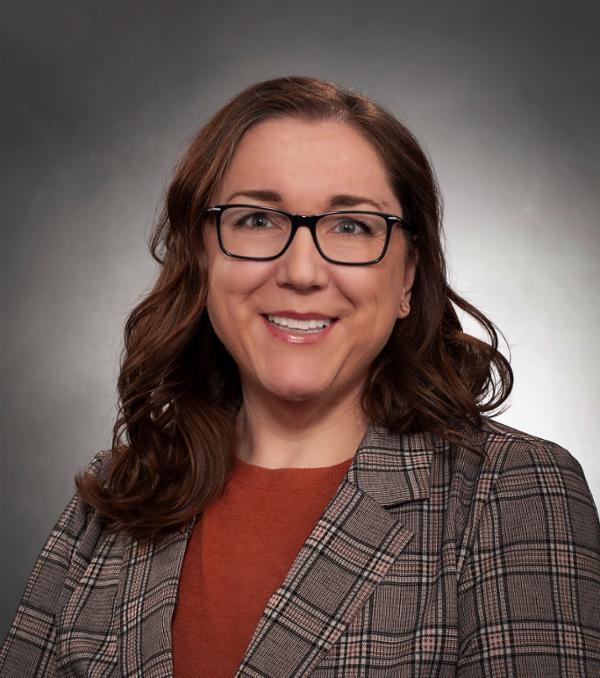 It’s a sentiment echoed by Janine, who grew just a block away from her grandmother Leota in Maple Creek. “I heard nursing at family dinners. I lived it. I breathed it. I ate it. It was all around me. From the time I started kindergarten, there was just nothing else I would ever have chosen,” she said.
It’s a sentiment echoed by Janine, who grew just a block away from her grandmother Leota in Maple Creek. “I heard nursing at family dinners. I lived it. I breathed it. I ate it. It was all around me. From the time I started kindergarten, there was just nothing else I would ever have chosen,” she said.
“I remember Granny Leota enthralling us with stories of what healthcare was like early in her career. When she was on night shift at the hospital, two of her duties were re-sharpening the needles and patching surgical gloves, and it was just so fascinating to me how far we had come. When I was starting to think about nursing, you knew that needles and gloves were disposable, so there was that whole idea that healthcare didn’t always look like it does today.”
And yet, it seems that the more things change, the more they stay the same.
“Even thought there weren’t names such as the Nurse Practitioner, when you look at the work that nurses did two, three generations ago, it was far more encompassing than we think,” Janine said. “They knew what holistic care was before that term was coined.”
There have also been many changes and advancements in the nursing profession.
Today’s nurses are more educated, more involved in collaborative care, and more reliant on data and diagnostic interpretation than ever before. But Janine believes the essential work of nurses has remained constant, and that nursing is still about humanity, compassion and relationships.
What we learn today in a four-year university program is far different that what Granny Leota learned in a teaching hospital over three years.” she explained. “The knowledge base is different, and the scope of practice as an RN has changed.”
But Janine believes reputation is an important value which spans the generations. Just as Friedrika built her reputation as a successful caregiver long before the days of telephones, reputation remains equally important in today’s world.
“Friedrika wasn’t attached to a hospital, or a phone number, so no one would have known her other than by reputation,” said Janine. “And she built that all herself. But I had to build my reputation too. So yes, I’ve got a skill set, and some formal education behind me, but at the end of the day my reputation is everything, and if you want to be seen as a helper, you need to be a helper.”
The Next Generation
Today, not only has nursing been passed down through generations on her mother’s side, but Janine also mentions great aunts, cousins, second cousins and an additional granddaughter, Angela, who are all nurses. The next generation is about to begin, with her niece Olivia and her cousin’s daughter Jorja set to begin their education.
“When Friedrika immigrated from Poland many years ago, I don’t think she would have dreamed that there are people in her lineage that are still caring for others,” said Janine. “That’s legacy, and I think she’d be proud.”
